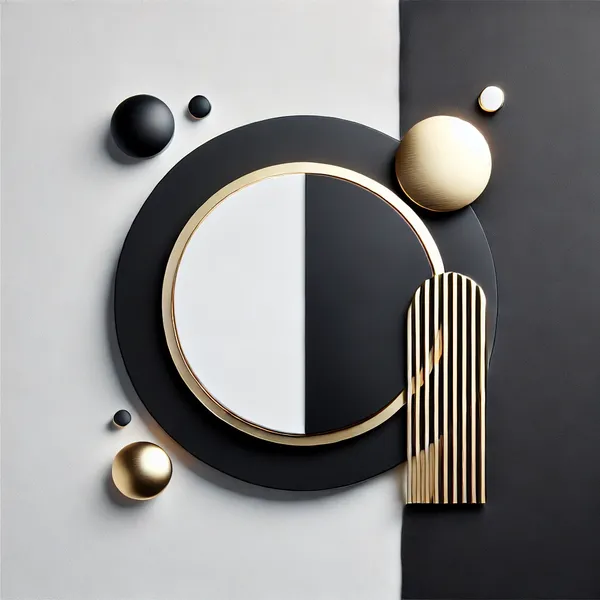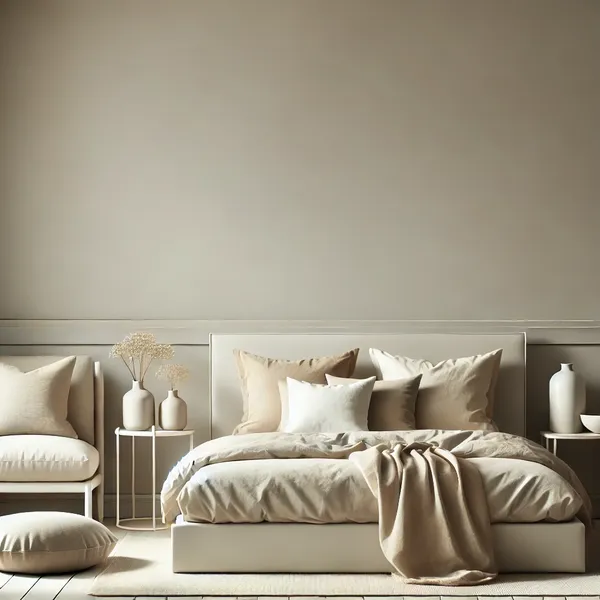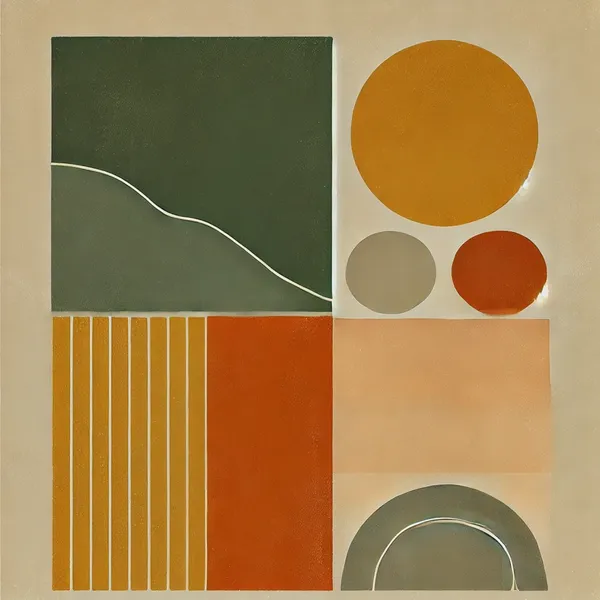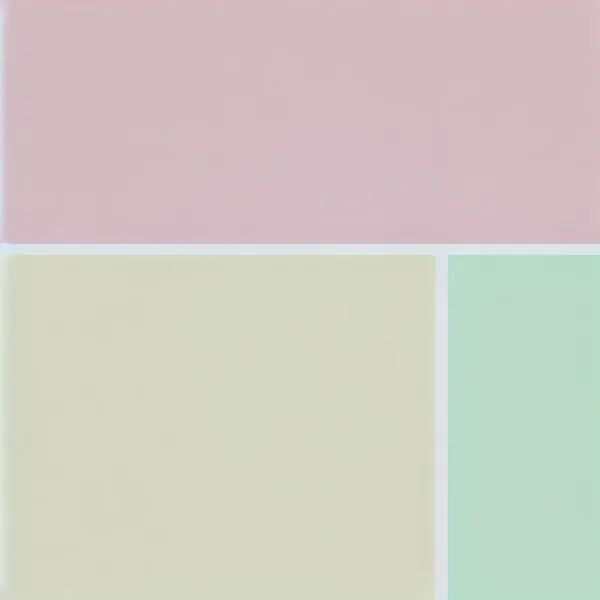In design, especially interior design, fashion, and even branding, colors are vital in creating the mood and ambiance of the environment.
It must also be said, however, that it is possible to overdo the use of bright and luminous colors – and sometimes, it is better to leave more to the imagination.
That’s where minimalist color palettes come in. In a nutshell, minimalist coloring is the perfect solution for those who want to have an elegant and pleasant appearance.
In this article, we will explore what minimalist color palettes actually are, why they are so effective, and how you can interpret them in terms of your home, your clothes, or your business.
You will learn what minimalist color palettes mean and why designers prefer using a combination of these colors.
What is a Minimalist Color Palette?
Minimalist color palettes mean that designers ensure they use the smallest number of color tones in the end products.
There, the idea is to prevent colors from overloading the sense organs with diverse stimuli. However, the concept implemented here is to select a limited number of colors to make use of while designing.
Here are some critical characteristics of minimalist color palettes:
- Neutral shades: Remember white, black, grey, and any other low-profile colors like beige.
- Monochromatic tones: Two bottles of the same color but different hues.
- Earthy or muted tones: Subtle shades that are easily incorporated into the environment formed by naturalism.
- Simple contrast: Bitter vs sweet, light vs dark, but never loud.
The beauty of having a few colors is that the design on the can will stand out since there will be little competition from other colors.
How Does Minimalistic Color Palette Appear?
1. Creates Calm and Clarity
There isn’t a shortage of distractions to be found in today’s society, and simple shades of color help to tone it all down.
They are helpful in making a particular area look more prominent and calmer, which is why people often use minimalistic designs in house interiors or offices.
When those combinations of colors are not blending into each other it is easy for our minds to become still.
2. Timeless Elegance
Unlike some other elaborate colors that may appear out of place from time to time, minimalist colors are more or less timeless in their existence.
Husks, single colors, and plain tones remain equally popular all the time. It means thinking about how a black-and-white design is always elegant and doesn’t really have a relation with a particular decade.
3. Flexibility
As will be described throughout this paper, minimalist color schemes are among the most flexible available today.
Computing a complexion is actually adaptable since numerous events and designs can be applied to home designing, operative dressing, and the design of logos.
4. Focus on Other Elements
While working with fewer colors, one can focus more on the other areas, such as texture, shape, and the rest. It can give your space, your clothes, or your branding that much more added thought and depth.
5. Easy to Combine
She also likes a plain color design layout because using this color means it is much easier to interlace other design attributes or styles.
Whether it is painting a living room, selecting furniture, or combining textures, a simple color palette will not compete.
Popular Minimalist Color Palettes
In this case, you are going to realize that there are several types of minimalist palettes you’re going to need. Here are some of the most popular ones:
1. Black and White

It is possible to name black and white as one of the most popular minimalist combinations out there.
It’s the black dress of power, and, quite simply, it’s classy, timeless, and works for any age and occasion. Black and white will also serve you right to get that elegant or modern touch on your image.
Pro Tip: If you want this palette to look even more classy, try putting a few metallic touches (such as gold or silver).
2. Neutral Tones

Earthy hues are those whose colors lie between light-colored tints and dark-colored shades such as beige, ivory, gray, and taupe.
These colors are so muted and can easily blend with any environment, which will help bring serenity.
Examples:
- Light gray walls together with white furniture.
- The beds are taupe-colored with ivory color pillows.
3. Monochromatic Shades

Monochromatic palettes are developed where different shades and tints of a particular color are used. It is possible to keep things basic, and at the same time enrich.
Example: So, if you like blue color, you can make a combination of navy, sky, and pale blue to have a sense of calmness.
4. Earthy Tones

Many people find natural shades of green, yellow, orange, and red, such as olive green, mustard yellow, burnt orange, and terracotta, comforting and earthy.
Pro Tip: If you choose warm earth tones then it would be better to combine them with non-warm neutral tints, like cream or light gray, for instance.
5. Pastels

Pastels are lighter reproductions of typical colors, including blue, pink, green, and yellow. These shades build a soft, calming environment and are ideal for building a simplistic color scheme that looks new and unpretentious.
Examples:
- The hall should have a soft pink color on the walls complemented by white.
- Light mint and light yellow for the feel of spring
How to Incorporate Contemporary Basic Color Schemes into Your House
1. Start with Neutral Base Colors
Most of the time, when employing a minimal amount of colors in a room, it is advisable to use the base color as the primary detail.
These colors will be used as a basis for your chosen design. Thus, light grey, beige, or white embedded on the walls will complement the other parts of the room.
2. Add Contrast with a Few Accent Colors
The moment you are set with the primary color, you can incorporate into the place one or two more colors, which usually are accent colors.
They include: You can put a grey-colored throw cushion on a white couch or an off-blue carpet on a beige floor. It is recommended to have restricted accent colors and one or two at the most in a room.
3. Use Natural Elements
Unlike small amounts of graphite, wooden or stone floors warmed with metal will add texture to minimalist settings.
They complement minimal color schemes well because while they bring depth, they do not necessarily bring dramatic bulk.
Example: A white setting, wooden decorations, and black metallic lamps contribute to the creation of a fashionable and concise image.
4. Embrace Negative Space
Then, in the minimalist design concept, the area outside intervention, namely the negative space, is as significant as the objects that are inside it.
There is no need to occupy every space in your home with something to hang or put on the floor.
In some areas, you may paint to bring out the color you want, but let some parts go plain so that the color indeed pops.
5. Balance Light and Dark
Choosing Minimalist colors is all about moderation on the side of the colors to be used. If you are applying a light neutral color as your base color, then you can counterbalance it with darker trademarks or furnishings.
Dark wall color, on the other hand, appears well with lighter furniture and accessories within the room.
Pro Tip: Mirrors or glass elements are best to visually open the space and make it look much more profound than it actually is.
How to Use Minimalist Color Palettes in Fashion
1. Create a Capsule Wardrobe
A capsule wardrobe is a small set of clothes with a few types of garments that a person can interchange.
Abstract work in a geometric style looks best with the use of minimalistic color combinations. Fix some grey colors such as black, white, gray, beige, and others, then wear many clothes with those colors.
Example: A black blazer, white shirt, and beige trousers looked clean and classic and were suitable for almost any situation.
2. Layer with Subtle Tones
Now, if you’d like to give your clothes a little more flair, you can introduce an accent color that will be softer.
Something as simple as a pale blue scarf or gray sweater will do the trick in breaking up the plain outfits.
Pro Tip: The best way to incorporate the accent color is by preserving simplicity while using the color, or instead using it at most twice.
3. Use Texture to Add Interest
Texture is essential as well, and it is used minimally. You could include thermals, taffeta, organza, georgette, crepe, modus, baist, and challis to your simple style wardrobe.
Such textures can make a plain appearance stylish and elegant without having to use large patterns or vibrant colors.
Example: Men wearing simple white linen shirts with beige trousers can look so bright and classic if the fabric is treated interestingly.
How to Use Minimalist Colors for a Brand
1. Simplify Your Logo
Your logo is essential if you are building your brand since it defines the uniqueness of your brand.
Keeping the color theme simple also helps your logo be more unique and classic.
Avoid using too many colors and stick to only one or two colors; natural colors are the best.
Pro Tip: Let’s consider such companies as Apple or Nike: they have made the unique emblem as non-complex as possible because such logos are more accessible to recall.
2. Maintain Consistency
The minimal use of color stimulates the branding since less change in color makes it easy to keep the brands consistent.
It brings consistency when you use the same colors throughout your site, your pages on social networks, print media, and any other marketing materials.
3. Use Negative Space in Design
Just like in interior design, negative space is vital in branding. It gives your logo or message space and makes it even more effective when displayed or passed across.
Example: A clean, plain font in black against a white background is sleek and professional with no fuss which helps give focus to the brand.
Tips for Creating Your Minimalist Color Palette
1. Start with Neutrals
It all begins with non-overclocked colors like white, gray, and beige. These will serve as the blueprint of your design if you are redesigning your home, wardrobe or your brand.
2. Limit Your Accent Colors
In choosing your accent colors do not exaggerate too much. Of course, it’s good to have variation, but do not overdo it by combining too many colors, especially not on your base colors; two or three complementary colors should be enough.
3. Consider the Mood
Consider the atmosphere you are going to set when designing your custom motor control application. Down-to-earth colors put on warmth, while blue or gray colors give a new and serene feeling to the space or clothes.
4. Try Out Tints and Shades
You may add a shade or two lighter, or a shade or two darker of your selected color. This helps to create the shades and depth without bringing in too many different levels of shade.
5. Quality over Quantity
Minimalism is primarily about quality and purpose, and this idea resonates well with minimalist design.
Ideally, each color selected should have a reason and fit appropriately in the selected concept.
Final Thoughts
Sticking with only two color options might be the best strategy to introduce sophistication, tranquility, and universal acceptance to your design, clothes, or business image.
Whether selecting a curtain, coordinating furniture, clothing to wear, or even logo design, excessively complicated colors will only allow other parts of the items to cover the essential parts. In contrast, a simple color makes them pop out. What’s most important – it is all about balance, harmony, and clarity.
Do you want to start reading about minimalist color palettes? Remember, here, it is sufficient to use as few colors as possible since each color is singled out against the next color. Remember to be bare, have a purpose, and let the colors do the talking!